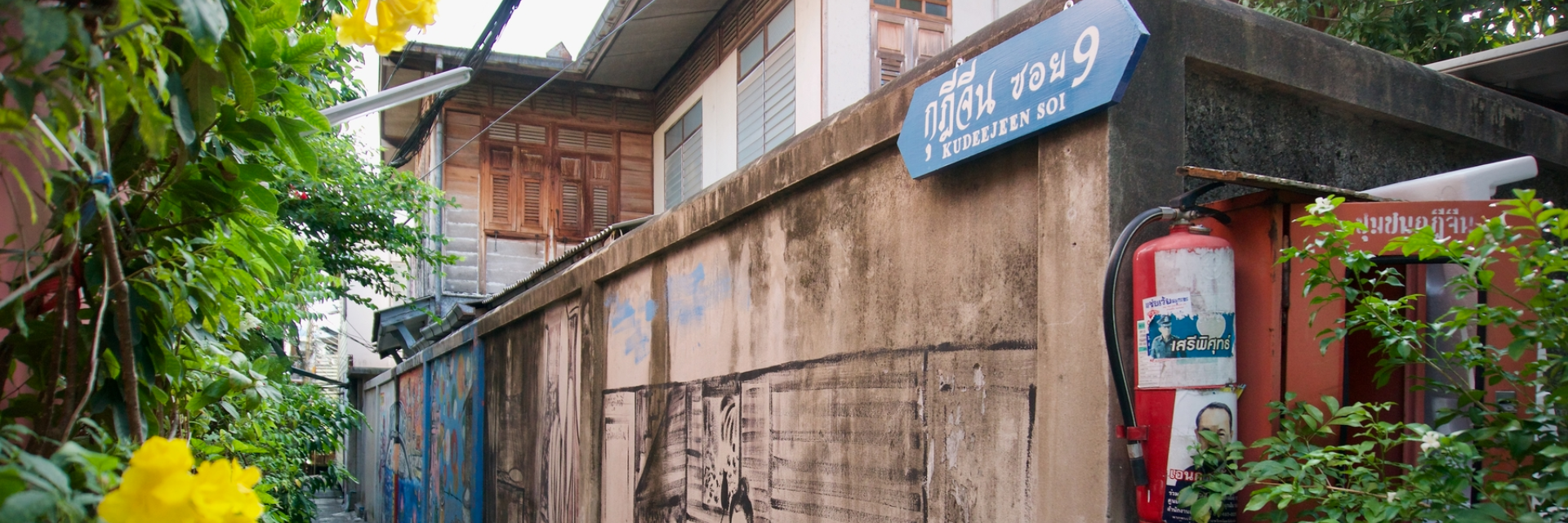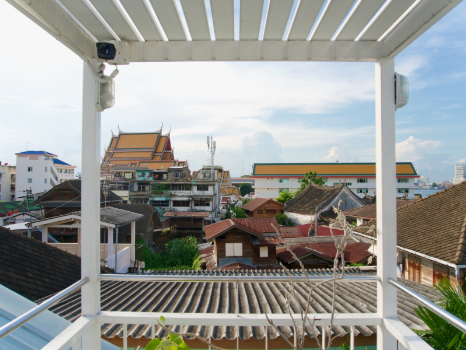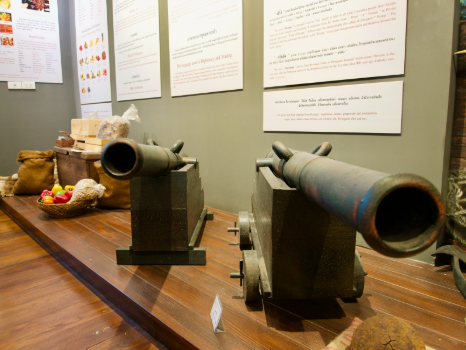The Kudi Chin or also known as “Kadi Chin” is one of a historic neighbourhood found near the bank of the Chao Phraya River during the reign of King Taksin the Great who established the city of Thonburi as the new capital city.
Although the Portuguese – Thai community has settled in Bangkok for more than 200 years, they have amassed a wealth of culture, history and tradition to pass on to subsequent generations. It’s a unique community that harmonizes Buddhists, Christians and Muslims way of life together with diverse Thai and Chinese cultures. Hence, this cultural variety makes Kudi China unique and charming community for everyone to experience.
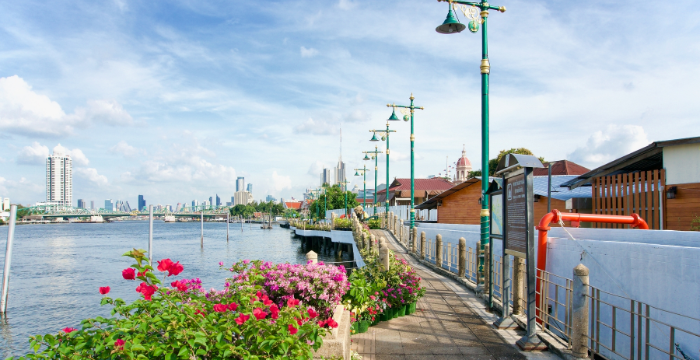
You can start with the “Santa Cruz Church” (Kudi Jeen Church), which derives from a Portuguese term “Santa Cruz”, meaning “holy cross”. The church is one of the oldest Catholic Church that was built in 2313 B.E. (1770 A.D.) on the land bestowed by King Taksin as a legacy of Portuguese relations. Originally the Church was built in teakwood. After severely burned by a fire accident, it was rebuilt to its former glory with bricks as well as given a redesign that blends renaissance with neo-classicism. The Church’s reddish dome sits magnificently on top of the structure that is comparable to the dome of the Italy’s University of Florence.
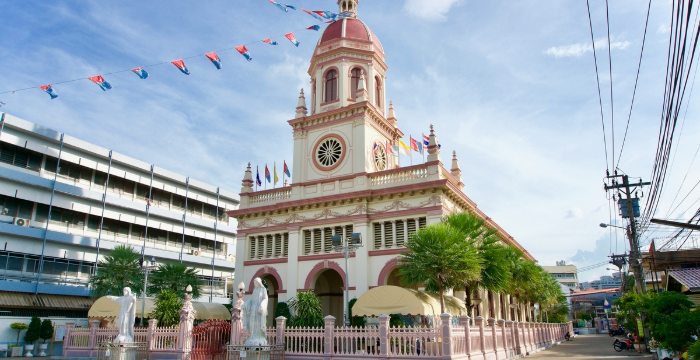
In the same vicinity, the Baan Kudichin Museum, open for free admission, offers a small café with a pleasant vibe for relaxing on the ground floor. At the top floor, features an exhibit that retells the arrival of the Catholics that are Portuguese, Vietnamese, Chinese and even Westerners from other nations during the reign of King Rama III. Among those who arrived are famous historical figures such as Dan Beach Bradley, from the United States of America, who took residence in the Kudi Chin community, reflecting cultural diversity through commodities and merchandizes used during that period. Anyone who wants to enjoy the breathtaking view of the Kudi Chin community and the Chao Phraya River can make their way to the rooftop of the museum. Smile, breathe and slowly view the landscape.
The Kian Un Keng Shrine is a Hokkienese joss house of the Kudi Chin community located near the bank of the Chao Phraya River. The shrine was built for worshipping the Goddess Guanyin and is considered one of the oldest shrines situated in Thonburi. Though the shrine has aged over 100 years, it still retains its beauty made from the finest wood and detailed carve craftsmanship along with paintings that survive to the present day.
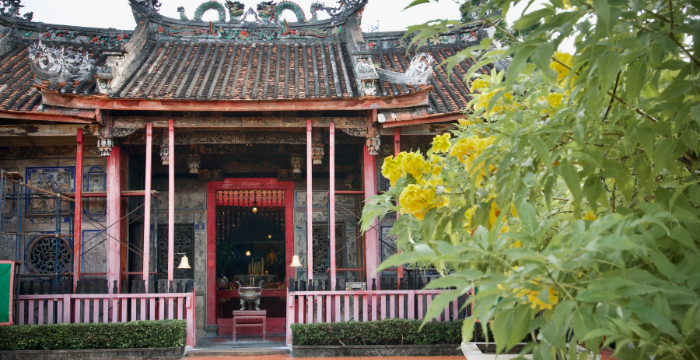
Afterwards, you can visit the Kalayanamit Varamahavihara Temple, one of the royal temples, established by a nobleman “Chaophraya Nikonbodin” during King Rama III era. The interior temple sits an enormous golden “Phra Buddha Trai Rattananayok” also known by the locals as “Sampokong”, crafted in the same style of as the Buddha statue from Wat Phanan Choeng in Ayutthaya. Moreover, the ordination hall also housed a Buddha image-receiving offerings, which is considered unique since most Buddha statue in temples are in meditation or in a relaxed posture.
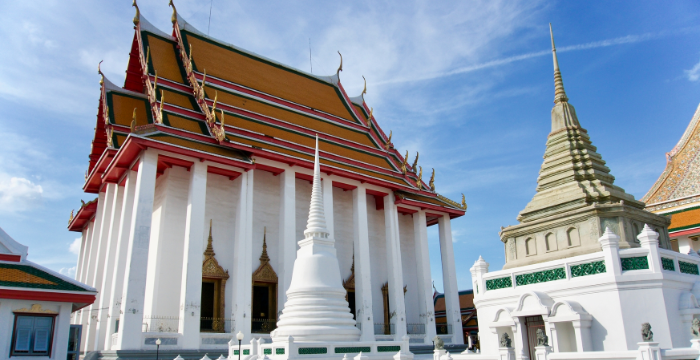
Besides shrine and temple, another building reserved for religious activities that brings a unified community for the Muslim is the “Bang Luang Mosque” also called “Kudi Khao” has a distinctive design from traditional Thai architecture, unlike any other Mosque.
Before ending your trip, come taste the delicious “Khanom farang kudi chin”, a dessert influenced from Portuguese mixed with Chinese cakes. The main ingredients include wheat flour, duck egg and sugar which are traditionally baked on a charcoal brazier, and topped with raisins, persimmon, winter melon and white sugar. You can seek out this unique dessert at three places, Lan Mae Pah, Thanusingha and Pah Aum Phan bakeries.
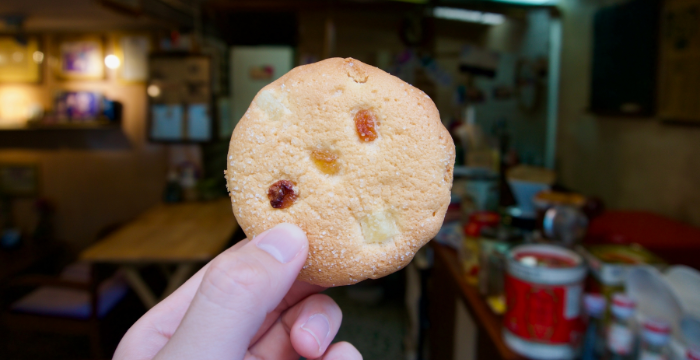
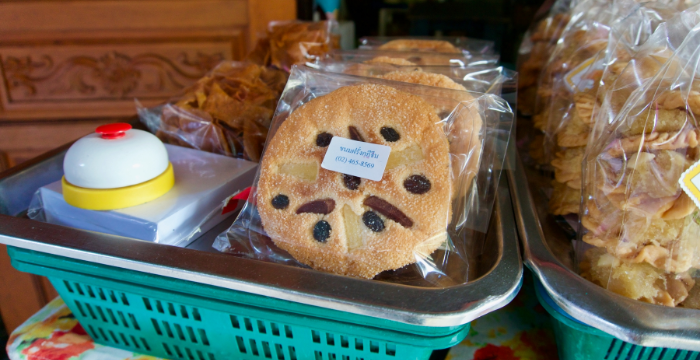
Get a glimpse of the Kudi Chin community by starting from the BTS Taksin Station and take the Chao Phraya express boat to Saphan Phut. Then cross the ferry from Atsadang Pier to the Wat Kanlayanamit Cross River Pier. Once reached your destination, you can walk through the roads next by the river to the Kud Chin community.
Take the MRT to Sanam Chai station, then take the ferry at Atsadang Pier, next to the Yodpiman Riverwalk, to reach the Wat Kanlayanamit Cross River Pier.


